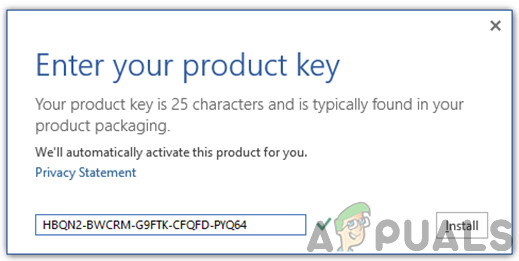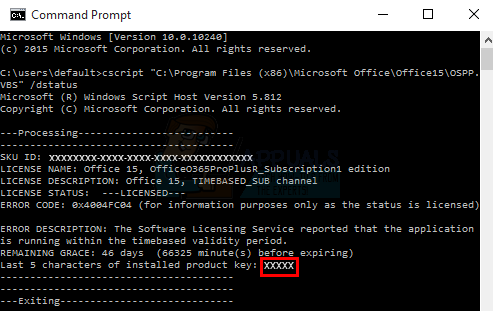How to Find Office 2013 Product Key
With so many computer applications available in the market, it is normal for us to install various applications on our desktops or laptops. In fact, applications like Microsoft Office, Web browsers, Adobe applications and so many more are essential for us. All of these applications come with their own unique product key that is required to install and activate the product. However, it’s common to forget or lose these product keys which is understandable considering how many applications we have to install on our computers. The problem is, once the key is lost, you won’t be able to re-install/license the application.

There are many cases where you have to re-install the Windows or you might want to install the application on another computer. You will either have to find the product key or buy a new one if you want to activate/license the new installation. This can be really frustrating considering you can use the product key multiple times (for a limited number of times).
The bad news here is that Microsoft has changed the way it stores product keys with Office 2013. Office 2007 and 2010 stored the full product keys on your computer and there were multiple methods to extract the entire keys. However, with Office 2013, Microsoft doesn’t store the whole product key on your system but rather stores the last 5 digits of your product key. These are the 5 digits that are enough to identify your product key but, as you would have guessed, you will need the other digits to reinstall the Office. Now, you can’t really extract the full product key from your computer because, well, it isn’t stored on your computer. Only 5 digits are stored and these methods mentioned below can be used to extract the 5 last digits of your product key.
The last 5 digits of your product key will be useful if you are an IT guy with lots of computers and licenses. With lots of computers and 100s of product keys, it would be a really difficult task to check which key is used on which computer. So, the last 5 digits can help you match the keys with computers. You can also use these last 5 digits to search your emails in case you got your product key through an email. However, if you haven’t stored the full product key anywhere then there isn’t a lot that you can do, unfortunately.
Tips:
You don’t always need a product key to reinstall your Office. If you bought the product online and didn’t get any product key then your Microsoft account will be linked to your Office. You will only need your Microsoft account to reinstall the Office.
Method 1: Use a Key Finder
Note: This method will only return the last 5 digits of your product key. This method will be useful for people who have multiple product keys and can’t figure out which one was used on which computer. You can use the last 5 digits to identify the key you used or you can search your emails for the full key.
The first and easiest solution for this is to use a key finder program. Key finders, if you aren’t familiar with the name, are applications that can be used to find the keys (your product keys) from your computer. These types of applications are specifically developed for this purpose. What these applications do is search your system and find the product key of the targeted application along with a lot of other information.
Now that we know what a key finder application is and what it is used for, its time to select the key finder application. There are a lot of key finder applications in the market but, unfortunately, not all of them work for Office 2013. Most of the key finder applications you find will work for the 2010 or 2007 Office. Some of these applications will give you a completely wrong key while others will give you just the last 5 digits of the key.
So, here are the steps for downloading and using a key finder application.
- Click here to go to the KomodoLabs official website. Click on the Download Now button under the Newt Professional section. It is free so it won’t cost you anything.

- Install the program once it is finished downloading and run Newt Professional
If this doesn’t work for you then you have another option named LicenseCrawler. LicenseCrawler is another key finder application that is known to work for Office 2013. So, you can give it a shot as well. Click here and download the zip file. Simply unzip the file and you will see the LicenseCrawler.exe file. Run it and check if this gives you the product key you are looking for.
Once you are done, you should have the last 5 digits of your product key. Now, you can use these 5 digits to search your emails or any other digital space where you might have stored or got the key. However, if the last 5 keys aren’t enough then there is nothing that you can do.
Method 2: Using Registry
A lot of users have pulled out the stored key from the registry editor. So, you can try your luck with that as well. Here are the steps for extracting the key
- Hold Windows key and press R
- Type regedit and press Enter

- Now, go to this address
HKEY_LOCAL_MACHINE\SOFTWARE\Microsoft\Office\15.0\ClickToRun\propertyBag\
If you don’t know how to navigate in registry editor then follow the steps given below
- Locate and double click HKEY_LOCAL_MACHINE from the left pane
- Locate and double click SOFTWARE from the left pane
- Locate and double click Microsoft from the left pane

- Locate and double click Office from the left pane
- Locate and double click 0 from the left pane
- Locate and double click ClickToRun from the left pane

- Locate and click propertyBag from the left pane
- Now, locate the entry named homebusinessretail from the right pane
- Right-click homebusinessretail and select Modify
- A new dialog box will appear. The product key should be in the value section
This string should hold the product key. Again, these will be the last 5 digits of your product key so you will have to work with that.
Note: If you can’t find the key at this address
HKEY_LOCAL_MACHINE\SOFTWARE\Microsoft\Office\15.0\ClickToRun\propertyBag\
then try to look at this location
HKEY_LOCAL_MACHINE\SOFTWARE\Microsoft\Office\15.0\ClickToRun\Scenario\INSTALL
and look for ProductKeys entry. You can repeat the same steps (given above) to navigate to this new address.
Method 3: Script for getting Last 5 digits
This is a faster way to perform the method 1. If you are comfortable using the command prompt then you can type a few lines to get the last 5 digits of your product very quickly. Here are the steps for getting your keys from the command prompt
- Press Windows key once
- Type cmd in the Start Search
- Right-click command prompt and select Run as administrator… from the search results
- If you installed a 32-bit Office on 32-bit Windows
- Type the following and press Enter
cscript "C:\Program Files\Microsoft Office\Office15\OSPP.VBS" /dstatus
- Type the following and press Enter
- If you installed a 32-bit Office on 64-bit Windows
- Type the following and press
cscript "C:\Program Files (x86)\Microsoft Office\Office15\OSPP.VBS" /dstatus
- Type the following and press
- If you installed a 64-bit Office on 64-bit Windows
- Type the following and press
cscript "C:\Program Files\Microsoft Office\Office15\OSPP.VBS" /dstatus
- Type the following and press

This should show the last 5 digits of your product key on the screen. You can use these 5 digits to backtrack to full key or use them to search through your emails or other storage spaces.